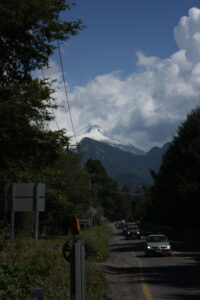A- is for avocados. I’ve said it before and I’ll say it again: Sam was not overstating the pure magic that can be found in the avocados of Chile. They’re plentiful, they’re delicious, and they’re cheap… and, hence, a part of nearly every meal.
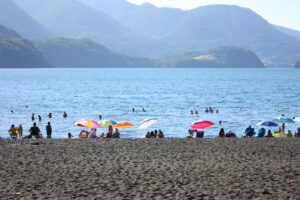
B- is for boofing. The rivers here are the perfect training ground for practicing everything from water boofs to smaller rock boofs to boofing the pants off ledges and waterfalls with relatively no consequence.
C- is for Choscheunco, my new favorite place in Chile. We’ve had several excellent, home cooked dinners in this tiny, pristine mountain lake town that seems to have escaped outside influence for years, and remains delightfully quiet and peaceful. After what will be YOUR favorite day of kayaking (RIO FUY!), unwind in this haven.
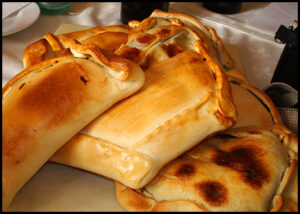
D- is for dams, or lack thereof. Many of the runs we’ve done here actually start in one lake and end in another, completely uninterrupted by man-made features, quite the novelty for those of us used to scheduled releases. On the other hand, we paddled the Rio San Pedro- a clear, wild, beautiful big water run- only to find the halted but still sad beginnings of a dam project that would inevitably lead to the disappearance of one of Chile’s most special and beautiful rivers. Check this out for more info! http://www.sinrepresas.com/
E- is for empanadas. These are little bread pockets filled with everything from ham and cheese to meat and hard boiled eggs. Think Stromboli without the sauce, only these savory treats will often be baked in a wood fired oven right in front of you as you wait.
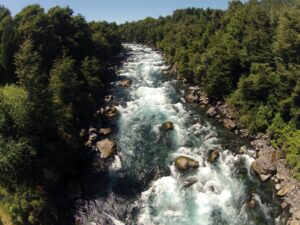
F- is for Fuy, one of my favorite rivers paddled here. This river had crystal clear blue water and everything from big water rapids to technical creeky moves to the crowning jewel, the clean and juicy 30 footer, Salto de Leona.
G- is for grit. I’ve needed to tap into my inner grit stock just about everywhere, from experiencing sweltering, noisy Santiago with a caffeine withdrawal headache to strenuous portages. Chile’s adventures will ask from you everything but reward you with priceless experience.
H- is for hammocks. At PKH, the hammocks are plentiful and comfy, and even if you’re not enjoying of the hammocks here, you best bring your own.
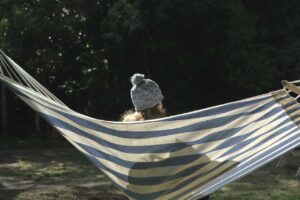
I- is for ibis. According to Chris: “The coolest bird ever.” These beautiful creatures flock over head at nearly every river passing with a most beautiful sound.
J- is for jugos. Delicious, impressive natural juice drinks, think all the best parts of a smoothie without the disappointing ice clump at the bottom.
K- is for kayaking… duh. Seriously some of the best, most accessible whitewater in the world lay here in Chile: from float trips to play to big water to steep creeking. There is something for everyone here, and plenty of unique areas to push your skills without serious consequence.
L- is for laps. If you’re in town, be prepared to meet up with a crew that wants to run Palguin laps or Feo laps or Fuy laps. In many places, shuttles are short and easy if not walkable, and there are tons of great rapids with so many lines, you could spend half the day exploring different ways to run it.
M- is for minimal. When traveling internationally, especially for a paddling trip where you’re bringing most of your own gear, keep it simple and minimal. There are plenty of places to do laundry or pick of a fresh pair of sheep’s wool socks if you need them, and even a second hand shop in downtown Pucón.
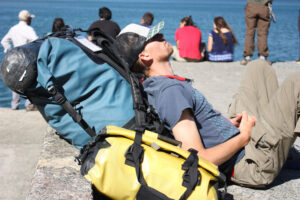
N- is for naptime. Chileans live life slow, easy, and peacefully. Take advantage of so called “Chilean Time,” and squeeze in a nap midday. You’ll need it with the 14 hours of daylight here in the summer; read: lots and lots time for kayaking.
O- is for otters. Did you see this one coming? I’ve seen otters playing on both the Rio Maichin and the Rio Fuy, both times at close proximity. These playful animals might get quite close to your boat to scope you out. When sharing an eddy with three above a challenging rapid, I took it as a good omen that things would go well… I wasn’t wrong!
P- is for pisco. A local, tequila like drink, this is often served up as the fabled Pisco Sour. I only had strength for a small taste, so for me, ‘P’ is also for pebre, a light but flavorful salsa that is always on the table. Sometimes spicy, this spread goes with everything from bread to eggs to mixing in to mashed avocados.
Q- is for quincho… usually an open air, outdoor kitchen common to Chilean homes, but more importantly, a common space to gather, eat, and socialize.
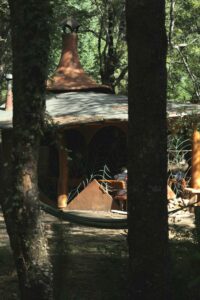
R- is for read and run. It’s not that you can’t scout rapids here if and when necessary, it’s that many rivers are simply blind in nature, and to get out and scout every single rapid will waste your precious energy far too quickly. Here, I have had the opportunity to work on my read and run skills by catching eddies, ferrying above drops, and giving and taking beta. Plus, it’s just dang fun to get into the groove.
S- is for saltos, Spanish for waterfalls. This is the land of clean, runnable waterfalls that are perfect for perfecting every type of running skill: plugging, 45-ing, stomping, and boofing. Hungry? Here’s a shopping list.
T- is for Trancura. The Lower is cruisey, wide open wave trains with some holes to keep you honest while the Upper includes some bigger drops and longer, more complicated rapids.
U- is for u-turn. With dirt roads galore, confusing and sometimes nonexistent road signs, and foggy river directions, be prepared to get used to your vehicle’s turning radius real quick! The rivers and destinations of Chile are worth turning around for.
V- is for volcan…oes. Here in what is known as the Lakes District, there are half a dozen snow capped volcanoes throughout, with different peaks visible depending on where you are. In Pucón, the prominent Volcan Villarica is difficult to miss on a clear day and is worth the inevitable dozens of photos you will take of her at various angles. If you’re lucky, you’ll catch a glimpse of her while routing into Feo on the Upper Trancura, or another volcano in the region while putting onto the Rio San Pedro.
W- is for walking. What’s so unique about the whitewater in this part of Chile is that many accessible and intermediate rivers will invariably include a Class V rapid or two. The Upper Trancura has the famous Marimán, the Upper Palguin has a rapid known simply as Portage, and the Maichin has a rapid with a horrible undercut wall which a tricky reentry downstream. If you’re paddling in Chile, be sure to leave your pride at home. Walking is common, encouraged, and often mandatory on many of the local runs… it’s certainly good fitness, too!
X- is for xylophone… just kidding. But X is actually kind of a hard one, and there aren’t many Spanish words beginning with X either… So I think I’ll reach a little here and say X is for crossroad. We talked a lot about why we travel before we left for Chile and now that we’re here, I realize travel and global experience only gets more important as we continue to search for ways to connect to one another. And, to paraphrase Frost… if you come to a fork in the road, take the road less traveled. Our experiences here in Chile have been unconventional and at times, uncertain… but I know that I continue to grow as a person and a paddler with each moment spent pushing myself personally, culturally, and on the water.
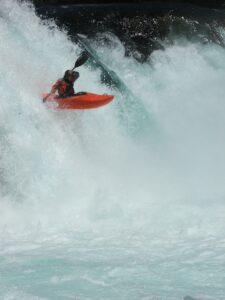
Y- is for You Only Live Once. Eat the local cuisine, chat with fellow travelers, and listen to your instincts on the water. “You only live once,” is a great way to push yourself past your limits and get in over your head, but it can also be a motivator and guideline for bucking up when you really are ready to take the next step. Don’t forget to slow down and soak in your surroundings. The rivers here are pristine and isolated, and the small mountain towns are filled with opportunities for you to try a new food, broken Spanish, or make a new friend.
Z- is for zapatos, Spanish for shoes. Not to sound like your mom, but you need to bring good shoes with you if you’re planning on boating here. If there’s not a long, steep hike in or out, there’s jagged, slippery volcanic rock lining the river banks that make scouting or walking just as treacherous as the rivers themselves if you don’t have the right shoes. The well known seal launch into the Upper Palguin is preceded by a tough, narrow hike in and followed by a long, steep hike out. Don’t leave your sturdy river zapatos at home!

